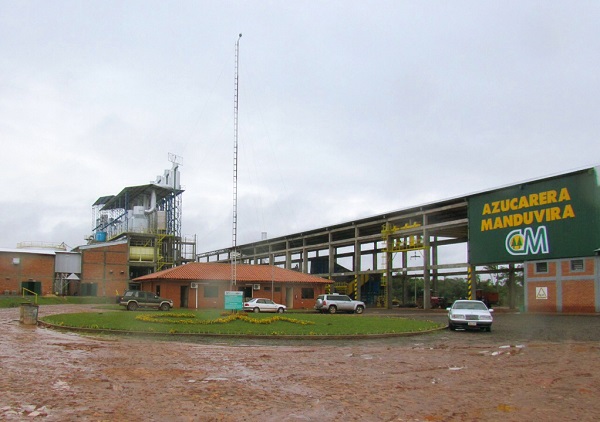
COMMENT: By Donnas Ojok
Agricultural Coops and Fair Trade: Tackling the agricultural investment dilemma
It is generally believed that agricultural cooperatives offer a natural entrepreneurial solution to the problems of poverty faced by millions in the developing world. The argument goes that these coops allow even the least literate smallholders to gain market access for their products.
However, compared to traditional business models, cooperatives face detrimental investment constraints due to their organisational structure and cooperative principles, making many scholars like Richard Sexton and development practitioners claim that not attracting external sources of financing remains the “Achilles’ heel” of traditional agricultural cooperatives.
The inability to attract finances for investment is attributed to a number of cooperative inefficiencies which appear first through the ‘free rider’ phenomenon, i.e. the members might leave the burden of management to others. The inefficiency is further recycled by the management’s refusal/reluctance to improve its performance.
Again, the free-rider problem also arises because earnings are sometimes allocated according to patronage rather than stock ownership – thus the members share in the return on cooperative equity capital regardless of whether they invest in the cooperative; meaning it is in every individual’s best interest to under-finance the cooperative.
Thirdly, inefficiency appears when there is a lack of long-term investments as members living close to poverty tend to prefer receiving any sale surplus immediately rather than to make profitable long term investments. The key for well performing co-operatives is thus active membership.
Most significantly, the major constraints cooperatives face are inherent to their structure. For instance, the user-ownership principle imposes a powerful constraint to financing. Since only active members may provide cooperatives with voting equity capital, the potential pool of risk capital is limited by the amount, wealth, and risk-preference of active members.
This generally means that cooperatives are restricted to raising capital internally which is a problem specifically in developing countries as cooperatives generally operate at the bottom of the supply chain and generate little surplus.
With the emergence and the rise of the Fair Trade Movement both in theory and practice, however, a laudable modicum of solutions to the financial mobilisation challenge that agricultural coops face seems to have been found.
The ensuing question thus is: what opportunities does Fair Trade provide for successfully enabling agricultural coops to attract financial support for their profitability and sustainability and in doing so, spurring the processes that alleviate poverty?
Co-operatives could be a vehicle for fair-trade and fair-trade could in turn provide a splendid opportunity for cooperatives in Africa to be revived after their collapse following the introduction of the Structural Adjustment Programmes (SAPs) in the late 1980s which critics claim were largely anti-cooperative movement. SAPs, for example, the removal of subsidies meant that the support initially advanced to the agricultural coops from government budgets had to suddenly stop.
Over the years, Fair Traders have found a plethora of economic incentives to partner with co-operatives in developing countries. For instance, a co-operative structure gives a farmer’s association the advantages of institutionalised ownership, institutional sustainability, a decision-making structure and socialisation of the fair-trade premiums. In fact, it is can even be argued that the Fair Trade Movement is succeeding in the West because of the existence of Cooperatives in the South that continue to produce fair trade products like coffee, cotton, and cocoa.
Today, there is an exponential proliferation of Fair-Trade products produced by cooperatives from the Africa and Latin America. This has been particularly so in the coffee Fair-Trade business where companies like Pret A Manger, Starbucks, Human Bean, etc. directly partner with agricultural cooperatives like Manduvira in Paraguay to produce coffee beans.
Even though some critics like Peter Grifiths point out to the ethical objections of Fair-Trade claiming that farmers, especially those in Africa are often put on the disadvantaged spectrum of Fair Trade – because of dealing with a specific fair trader- proponents like Gautier Pirotte argue that if the cooperative becomes a part of a larger national or international co-operative network, there is a greater chance to avoid the so-called fair-trade trap.
Many southern producer cooperatives sell their products at the same time on the international market, through the fair-trade network as well as through traditional intermediaries. This plurality of outlets gives them negotiation power and a competitive edge. Co-operatives can also help in penetrating the domestic markets that very often remain untapped by the internationally oriented fair-trade circuits, Pirotte argues.
With increasing organisational and business innovations, some agricultural coops in Africa and Latin America are changing their cooperative business models to suit the Fair Trade Investment models. Chaddad and Cook in their paper, `Understanding new cooperative models: An ownership-control rights typology’ point out that these innovations differ in the way ownership rights are defined and assigned to economic agents tied to the firm. Technically, the investor-share cooperative model opens up more opportunities for fair traders because it does not restrict ownership to member-patrons and thus are able to acquire outside risk capital.
This has created space for Fair-Traders to buy shares in cooperatives. As opposed to the traditional cooperative business model, the investor-share cooperatives allow acquisition of non-member equity capital by issuing different types of equity shares on top of the existing ownerships rights held by members of a cooperative. For this to work cooperatives are generally required to provide detailed information about their financial status and business prospects to investors. Investors therefore carry their due diligence and later on decide whether to take bets on such coop businesses.
Manduvira, a Paraguayan Cooperative is a classic example of a coop which radically changed its model to acquire external financing. To fund their Mill Construction, for instance, the coop attracted US$13.6 million in investment funds from multiple international financial institutions as well as local entities. Finance by external investors accounted for 67% and the remaining 33% came from domestic banks and the Fairtrade premiums Manduvira received.
The success of Manduvira is not to suggest that this could be the magic bullet for African coops, but perchance, Fair Trade and External Financing opportunities need an exploration to provide alternatives for solving the plethora of challenges that continue to riddle agricultural development in Africa.
****
Donnas Ojok is a Programme for African Leadership Fellow at the London School of Economics, a YALI East African Fellow, and currently working at the Konrad-Adenauer-Foundation as a Programme Manager. He Tweets at OjokD and blogs at www.donnasojok.com
 The Independent Uganda: You get the Truth we Pay the Price
The Independent Uganda: You get the Truth we Pay the Price


